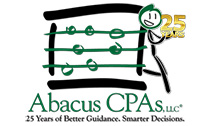Cost segregation is a tax strategy used by real estate investors and property owners to accelerate depreciation deductions on certain components of their properties. It involves identifying and reclassifying certain assets within a building for tax purposes, allowing them to be depreciated over shorter periods than the building itself.
Here’s how cost segregation works:
Asset Identification
A cost segregation study is conducted by a qualified professional, typically an engineer or a specialized firm. They meticulously examine the components of a building to identify which assets can be reclassified for accelerated depreciation. This includes items such as electrical systems, plumbing, HVAC (heating, ventilation, and air conditioning), interior finishes, specialty lighting, and more.
Classification
Once the assets are identified, they are classified into different categories based on their recovery period for tax purposes. For example, while the building itself might have a 27.5 or 39-year depreciation period for residential or commercial property respectively (under current tax law in the United States), certain components may qualify for shorter depreciation periods such as 5, 7, or 15 years.
Reclassification
The components identified in the cost segregation study are reclassified from real property (which typically has longer depreciation periods) to personal property or land improvements (which often have shorter depreciation periods). This allows the property owner to depreciate these assets more rapidly, resulting in higher depreciation deductions in the earlier years of ownership.
Tax Benefits
By accelerating depreciation deductions, property owners can reduce their taxable income and potentially lower their tax liability. This can result in significant cash flow savings, as the tax benefits are realized sooner rather than later. Property owners can use these savings to reinvest in their properties, pay down debt, or pursue other investment opportunities.
Compliance and Documentation
It’s crucial for property owners to ensure that their cost segregation study complies with IRS guidelines and regulations. Proper documentation is essential to support the reclassification of assets and withstand potential IRS scrutiny. A thorough and well-documented cost segregation study is essential for maximizing the tax benefits while minimizing the risk of audits or challenges from tax authorities.
Overall, cost segregation is a valuable tax strategy for real estate investors and property owners, allowing them to optimize their tax benefits and improve cash flow by accelerating depreciation deductions on eligible assets within their properties. However, it’s essential to work with qualified professionals and ensure compliance with tax laws and regulations to reap the full benefits of cost segregation.
If you have any questions about cost segregation, reach out to us at 417.823.7171 or at info@abacus.cpa.










